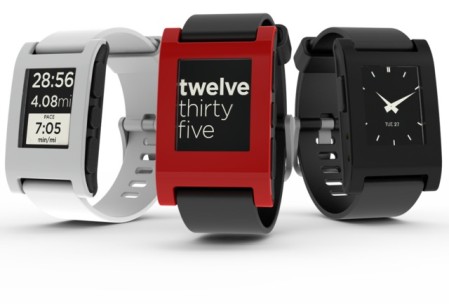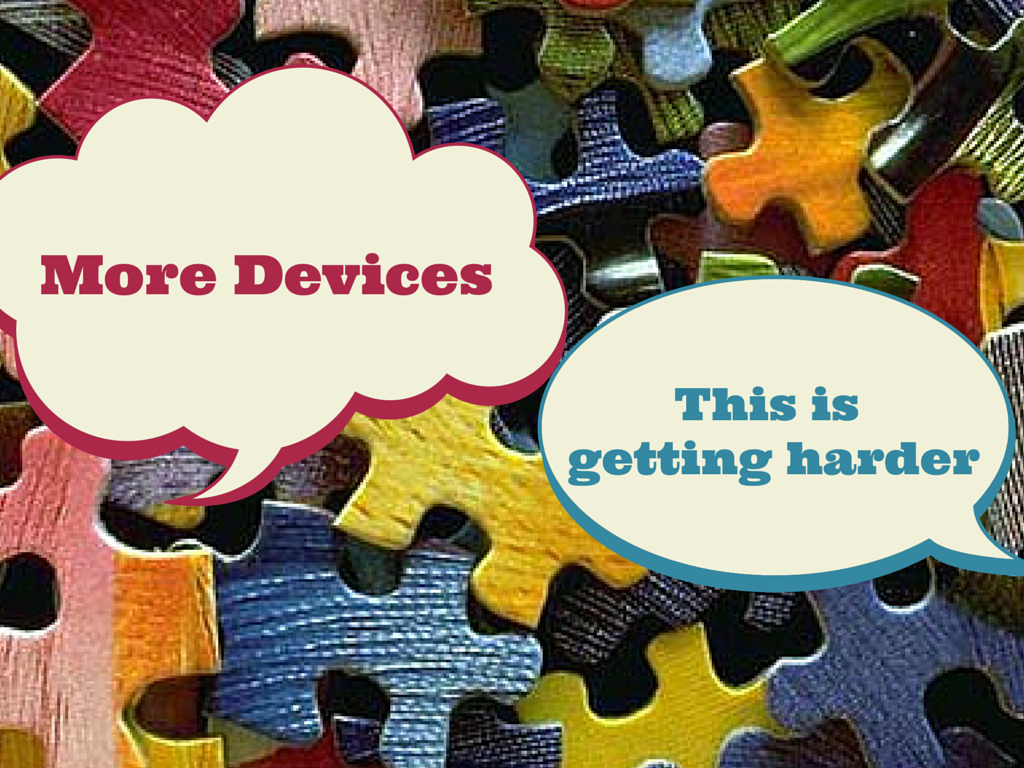For those that know me, I may be a bit of a gadget geek. I think the first step in fixing a problem would be to admit you have one. The challenge is, I have no intention of fixing my tech-trending life. I enjoy it. I think I counted over 10 phones I have had in the past two years. (much to my wife’s dismay)
Lately I have been focused on wearable computing. While not participating in all of the gadgets, I am very much interested in this space. The only wearable I currently have is my Pebble Watch. I must admit, I enjoy it but it is in it’s infancy. It doesn’t do everything I’d like and I am not sure it ever will.

As a product manager by trade, I always think about the process when a product was coming to market. What problem were they trying to solve? Wearables are trying to solve user problems that fall into a couple different buckets as I see them. First you have notifications. Can this device stop me from pulling out my true personal computer (mobile phone) every time it buzzes or rings? Second I see some lightweight utility apps. (think navigation or weather) Finally, the big bucket I look forward to is a bit more predictive information. Now, to be fair, predictive information as a category can be hard to quantify. Are they really notifications just being sent to the wearable? (Google Now). Is the mobile device doing more of the computing and the wearable is just a display? I think both could be true. The difference in my mind is the sensors that a wearable can bring to provide the context necessary to “surprise and delight” me as a customer.
Here is where things get challenging for someone like me. What problem do I care about being solved by a given piece of technology? While I am perfectly fine with glancing at my watch to see a notification about my upcoming meeting, I have learned I am less happy with getting my text messages on my wrist. Why? Consider this. How rude is it to pull out your phone to check a text while in conversation? (I personally try to never do that). I assumed I could just glance at my wrist and still stay focused on the conversation at hand. What happened? Now I just appear to be bored with you and I am checking the time constantly. Something I didn’t anticipate. For me, glancing up at something like Google Glass would be much more appropriate for incoming text notifications. Subtle yet available if I need them.
I am still trying to figure out in my own head which wearable solves which problems better for me. As for now, until I am a little more clear, it makes it harder to think through the next problem.. WHICH wearable of which type to purchase.
Smart Watches
The big challenge here is what capabilities and devices will survive the fragmentation challenges of the Smart watch world.
Pebble ($150)
Great notification watch with some simple applications. Pebble is really focused on building out a world-class SDK that developers can leverage. I still have high hopes here.
Martian Watches ($250-$300)
These watches tout voice control as their big differentiator. The screens don’t lend themselves to much digital real-estate however they are really nice watches with a little more.
I’m Watch ($350)
Great looking watch with it’s own developer platform as well. (although I don’t see this getting as much press)
Sony Smartwatch 2 ($200)
The screen and stock capabilities do pretty good here although developer support is not as strong
Samsung Galaxy Gear ($300)
I believe this is one of the more promising platforms, although for whatever reason they have decided to only sell it for a select few Samsung devices. Bad move in my view. If you want developer support, make it worth their while by being broadly available.
Glasswear
These devices are a bit more on the geeky side, but I still want one eventually. I believe I will hold our for at least 1-2 more revisions. The big challenge as above, how do you attract the right developers to get your platform to move forward. I think it will be key for these guys to just flat out fund key applications to get done right. If not, it will be seen as a gap when you are missing key apps.
The two key ones I am watching are:
Google Glass ($1500)
Obviously the big news-getter here. Lots of cool things happening. I think we’ve only scratched the surface of the potential here.
Meta-Pro ($3500)
These guys are going ultra high-end. I am excited to see what they are doing. It seems they have quite a developer following as well.
Oakley, Oculon and others are trying to get into this space as well. Oddly enough, it seems as though more devices are landing in this space in 2014 than great new watch ideas. Check out this article for more glasses.
Summary
My challenge is to really decide what capabilities are going to be in the device I think best serves that need for me before I pick a winner. Getting a Kickstarter Pebble Edition was just an eye opener for me as to where things are going. Fragmentation for developers will continue to be a problem. If the program owners for these devices can fund key apps, they can mitigate risk and increase positive perception amongst the mass market.
If you are interested, you can check out my Pebble Watch Faces and others posts.
